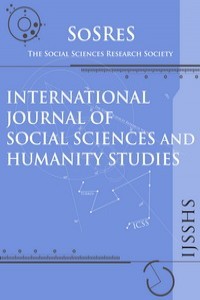PREDICTIVE MODEL FOR THE ADDED VALUE OF SULTANA SEEDLESS GRAPE PRODUCTION
PREDICTIVE MODEL FOR THE ADDED VALUE OF SULTANA SEEDLESS GRAPE PRODUCTION
Turkey after USA is the second important raisin grape producer by cv “Sultana” in the world (Kara, 2014). The Manisa district alone accounts for 31% of total grape production and 80% of the whole sultana seedless raisin grape production in Turkey. 95% of total grape output generated in Manisa is made up of Sultana seedless grape (TUIK, 2012). In this study, the added value of grape production in Manisa has been calculated and according to the findings, the per capita added value of grape production has been computed. In order to calculate the added value of grape production in Manisa, costs of labor, fuel, fertilizer, disinfection, hormone, repair and maintenance of the businesses around have been investigated. After calculated costs had been deducted from total business income, the total added value of grape production in Manisa and the per capita added value of grape production in Manisa were attained The efficiency per hectare in the sample production units, which was investigated during the field research, measures up to 26.470 kg. The percentile distributions of cost items at this efficiency level are; 27,8% fuel costs, 23,2% fertilizing costs, 19,9% irrigation costs, 11,4% disinfection costs, 7,5% hormone usage costs, 4,6% harvesting and transporting costs and the rest consists of maintenance costs. When the costs are deducted from income per hectare (11.646 USD), the added value per hectare turns out to be 8843 USD
___
- Aktaş, E., (2002), “Bağcılığın Türkiye Ekonomisi’ndeki Yeri”, Dünya Gıda
- Dergisi, No, 2002-7, Istanbul.
- Altındişli, A., (2003) An overview on Turkish Sultana Production and Recent
- Developments. International Dried Grapes Production Countries Conference, 23- October 2003, Izmir, Turkey.
- Çiçek, A., ve Erkan, O., (1996), Tarım Ekonomisinde Araştırma ve Örnekleme
- Yöntemleri, G.O.P.Ü., Ziraat Fakültesi Yayınları No:12, Ders Notları Serisi, No:6, Tokat. Kara, Z., (2014), “Sustainable Development in Viticulture Industry in Turkey”,
- Australian Journal of Biology and Environment Research, Müftüoğlu , T., Ürper, Y., Başar, M.ve Tosunoğlu, T. (2005), Girişimcilik,
- Anadolu Üniv. Yayın No:1567, Açık Öğr. Fak. Yayın No: 824, Eskişehir
- Manisa Valiliği (2012), “Sayılarla Manisa” Tarımsal Gelirler, S.63, TÜİK
- Uysal, H., (2007), Ege Bölgesi’nde Dış Satıma Yönelik Sofralık Üzüm Üretim ve Pazarlama olanaklarının Geliştirilmesi Üzerine Bir Araştırma, E.Ü.,Fen Bilimleri
- Enstitüsü, Doktora Tezi, S;44, İzmir FAO (2013), http://faostat.fao.org/site/567/DesktopDefault.aspx?PageID=567# ancor (erişim tarihi: 04.04.2014) TurkStat
- /bitkisel.zul (erişim tarihi: 04.04.2014)
- TurkStat (2014),http://www.tuik.gov.tr/PreTablo.do?alt_id=1075 (erişim tarihi: 04.2014)
- TurkStat (2013), Plant Production, http://rapor.tuik.gov.tr/reports/rwservlet bitkisel_uretimdb2=
- &report=BARAPOR1.RDF&p_yil1=2012&p_kod=1&p_sinif=2&p_dil=1&desfo rmat=html&ENVID=bitkisel_uretimdb2Env (erişim tarihi: 04.04.2014)
- Başlangıç: 2009
- Yayıncı: Sosyal Bilimler Araştırmaları Derneği
